THE SALMON FLY IN THE HISTORY
Culture and Economy Change the Fly

The gorgeous salmon fly was born in Ireland, spread to Britain, reached the peak of its popularity at the end of the 19th century and then was on the decline. In the 20th century Pryce-Tannatt tried in vain to revive it. I am afraid that no one can change the trend of times. Since then the gorgeous salmon fly has never come back to Britain.
The fly made in the 20th century can be described in a word as tied in a pragmatic fashion. Needless to say, it reflects the American trend that spread all over the world after the world war two when America became the biggest power in the world.
The salmon fly is greatly influenced by the economic power of the day, as is true of prawn, which gives an image to the salmon fly. The salmon fly made dramatic development in Britain when Britain became the biggest economic power we have ever seen in the history and in possession of most wealth in the world. Prawn, expensive food, also tends to come together to the economic centre of the day, London and then New York.
I Admire the Beautiful Fly
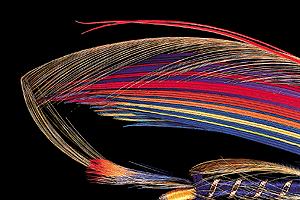
"Any fly will do as far as we can get fish with it", this view did not have its origin in this century but exists in any time. Some decades before the gorgeous salmon fly was highly admired in Britain, Francis Francis had already been disappointed with such a view, saying "What a pity trend it is!" Today at the end of the 20th century, most flies are far from beautiful or pretty in Japan or America. So I am sure that many of fly fishing lovers as well as Francis Francis must have some doubts about what the fly is or what figure it should have.
Anglers used to enjoy catching fish as the game of fly fishing which had strict rules. But now we often see new types of flies that could not be imagined at that time. It is not uncommon that all except for the real baits or lures are accepted as flies. I cannot agree with this passive approach at all.
It is very natural, however, that once a certain trend is widespread the opposite idea appears. As the exclusively functional fly has spread, a desire to long for the most beautiful fly has grown.
I want to make a beautiful fly. I want to get fish with my beautiful fly.-- If an angler has got such an idea, if he learns about the history of the beautiful fly, if he sees splendid flies in the past that were made in the same idea as his, he will dedicate himself to searching for the world of the beautiful fly.

September Blue Old Limerick 7/0
At the beginning of 1980's I was just such an angler. Since my first fly fishing I have admired the beautiful fly of both dry and wet genre. I also wanted to cast my fly line beautifully to make all the process of fly fishing beautiful. Since I saw the classic salmon fly for the first time I have long dreamt of tying it on my own, catching fish with it and finally Atlantic salmon some day.
Steelhead, which bites any fly, can be called a welcome fish for anglers. Some anglers think that any fly will do to catch steelhead, whereas others want to catch it with the perfect fly. As you know, I belonged to the latter type and I was totally mad about making the fly, which was really suitable for getting this beloved fish. I felt really happy to land it with my beautiful fly in its mouth.
Cherry salmon was also the fish of my dream, so my fly for it had to be beautiful as well. Those flies without a sense of beauty or those with weight in them were not acceptable at all. Using those flies seemed to me to insult fish, that means to make my fly fishing superficial. Later I was deeply moved to tie the fly for Atlantic salmon, which I had most adored for a long time.

Dream Tactics Old Limerick 8/0
The Classic Salmon Fly
Nowadays the gorgeous salmon fly I mentioned at the beginning is called classic. In the light of practical viewpoint of attracting and catching fish, there is no doubt that even the hook is the valuable cultural heritage. Moreover, not only excellent technique but also a lot of time and money are necessary to make it. Therefore, it is quite natural that it is admired but avoided from the ordinary fishing. However, passion and ideas, which a lot of anglers had given to their flies for many years, never disappeared but have been sleeping in their pattern lists with matchless beauty.
I began to tie salmon flies following the pattern lists in the available books. They were good enough to get steelhead but further questions were raised one after another as I knew the beauty of the fly and also a hint of death hidden in it. I was absorbed in looking up the old fishing literature but there was no answer. On the contrary, I had more questions. I realized that I could not solve the problems without looking up the original texts. Then I asked many acquaintances to help me.
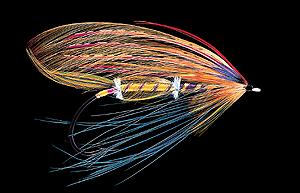
Unmarried Angel Old Limerick 8/0
Soon I was astonished to read some of original texts I fortunately got. I was awed by the fact that there was such supreme world more than a hundred years ago. Splendid illustrations in the texts (there was no photo in those days) were formidable beyond my description. As I read a huge number of pattern lists my energy welled up in me. I had never felt such a tremendous energy. I was just in the mood to reproduce these patterns at any cost.
I want to see these flies! Flies only kept in these pattern lists! I knew the only way was to tie them on my own.
Fortunately, Mr. Alan Bramley, the then director of Partridge of Redditch in Britain, promised at my request to reproduce the hooks used in the 19th century. He also guided me to famous rivers in Scotland. Furthermore, Mr. James Hardy, my old acquaintance, lent me "The Salmon Fishing" by J.J. Hardy, the last book unavailable for me, when I dropped by his factory. Thanks to them, I could reproduce approximately 500 salmon flies in two years. I tied them at unbelievably high speed and I was never tired of tying for a minute. I read over twice as many patterns as I tied. While reading the pattern books I selected patterns which were characteristic of both the trend of the times and the mind of the author as well as which were surely considered to get a lot of fish.
By looking at each of a huge number of flies that I reproduced I could find how anglers in those days thought about the fly, what was the excellent fly and what was the beautiful fly.

Daybreak Old Limerick 8/0
Then I could also imagine each angler's skill through his flies. I was impressed to know that the fly really tells us not only angler's philosophy but also his character.
My Book "The Art of the Classic Salmon Fly"
In the middle of 1988 I almost finished reproducing the salmon flies of masters in old days whom I often mentioned in this series. On taking their photos I was going to publish a book about them. Every thing was going well but I felt uneasy about one thing. I had no pattern on my own to introduce although I reproduced such a huge number of salmon flies that no one had ever challenged and was about to publish their photos.
I had already introduced some original patterns. Fortunately, some of them--dry flies, wet flies and streamers--had a good reputation as pretty ones to get a lot of fish. But the salmon fly was quite different. I had less opportunity to use it. Above all I was overwhelmed by passion of famous authors in the past.

Mermaid Old Limerick 8/0
In the genre of dry flies, wet flies and streamers it is not difficult to see whether my pattern is original or not by checking 400 or 500 patterns. But then it is almost impossible to make an original fly as far as I use popular materials. Only idle authors that do not look up into historical literature consider their patterns to be original. If they look up into old data they will often find more splendid ones very similar to theirs there.
On the other hand, in the world of the salmon fly there is almost no model creature. I had not the slightest idea what I should depend on to tie my own patterns. But still I cannot make an original fly only by giving a new colour to the traditional pattern. To be honest, I had an ambition but I was at loss as to how to tie.
In this way, I had an ambivalent feeling of ambition and hesitation just before editing my book. Because I was planning to introduce the salmon flies forgotten in the history again I had no hope to get the opinion about my work from home and abroad. Under the circumstances that even reproducing old flies amazed people, Mr. Paul Schmookler was the only fly dresser that pushed me. He wrote to me that I should not be resigned to a craftsman whose work was limited to reproduction but should publish my own flies as an artist. I had never tied an original salmon fly before. I could have tied one if I had known nothing about the salmon fly. However, reproduction of 500 salmon flies had discouraged me from tying my own. But at the same time, in spite of lack of confidence, I was fired up with ambition to challenge this great world. Probably I had been waiting for something to push me. Mr. Schmookler's words drove me to sit at the vice as if the floodgate in my heart had suddenly broken open.
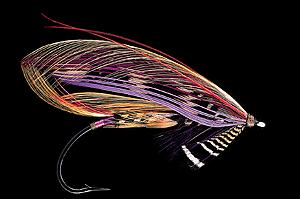
Memories Old Limerick 7/0
Within a week I completed my first 9 works.
- September Blue
- Dream Tactics
- Tropical Night
- Unmarried Angel
- Daybreak
- Mermaid
- Memories
- Joy
- Bluebird
Without a rest I tied 42 flies in total in two months before the closing date.
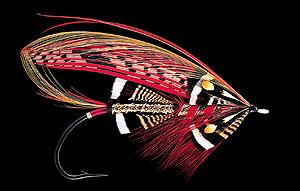
Joy Old Limerick 7/0
My book "The Art of the Classic Salmon Fly" published by Kodansha in 1990 won popularity rather abroad than home and became well-known among salmon anglers all over the world. I anticipated that many readers were pleased to see the photos of old patterns that almost no one could see now, as was true of me. To my surprise, however, they mainly admired my original patterns! Since then ---It is too bold of me to say---I have sometimes been called Kelson in 20th century. From foreign eyes, it was not purely by accident that a new trend was set from Tokyo, where prawn came together from all over the world at that time.
Unexpectedly, this book awakened the potential lovers of the beautiful fly throughout the world and dramatically enlarged the number of classic salmon fly tyers. This trend, however, is a bit different from that led by Pryce-Tannatt who inspired anglers to return to the traditional beautiful fly. Nowadays almost all salmon fly dressers tie their flies as a hobby. Except for anglers who often fish for steelhead or salmon, those flies are seldom used for real fishing. Salmon fly dressers make the fly not because they need it but because it is beautiful. It is not whether they use it or not that motivates them to tie the fly.
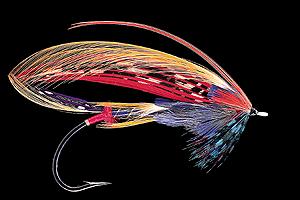
Bluebird Old Limerick 8/0
I remember that Major Traherne seldom recorded his own patterns in his books. He enjoyed making his original patterns but it cost too much time and money to use for real fishing.
After "The Art of the Classic Salmon Fly" was published not only classic but also original salmon fly dressing became popular. But how many classic patterns you tie to understand the salmon fly and to foster your sense, you must be at loss as to how to make an original pattern. In any time you need courage and effort to open a new world based on your sense. Then you must rack your brain in front of the vice.
I wrote in the first chapter of this book how I felt at that time.
KEN SAWADA
Translated into English by Miyoko Ohtake
- NET SHOP INFORMATION

SL6 Black Spey Hooks

DU3 Limerick Spinner Hooks

SL4 Single Bartleet Hooks
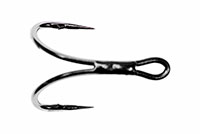
XD1 Tube Fly Double Hooks

DD2 Flat Perfect Hooks

DD1 Black Terrestrial Hooks
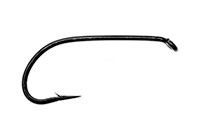
TD4 Old Limerick Wet Hooks

DU1 Silver May Hooks

MU1 Flat Midge Hooks

LD3 Long Limerick Hooks

TD2 Summer Sproat Hooks
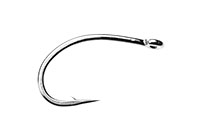
XS1 Tube Single Silver Hooks

TD6 Siver Sedge Hooks

SL5 Black Spey Hooks

DU3 Limerick Spinner Hooks
- TROPHY CLUB
- FLY SHOW
- EXHIBITION
- MASTERS`
- FLY DRESSING CONTEST Archives
- TRAVELLER Archives
- TACKLE IMPRESSIONS Archives
- ANGLERS` PHOTO GALLERY Archives
- ----------------------------------------------
- トロフィークラブ
- フライショー
- エキシビション
- マスターズ
- フライドレッシング・コンテスト・アーカイヴ
- トラヴェラー・アーカイヴ
- タックル・インプレッション・アーカイヴ
- アングラーズ・フォトギャラリー・アーカイヴ
株式会社サワダ 185-0021 東京都国分寺市南町3-13-4
SAWADA'S INC. 3-13-4 Minamicho, Kokubunji, Tokyo 185-0021, Japan
写真・ドキュメントの無断転載を禁じます。
All the images and documents found on this site are owned by Ken Sawada and may not be used without permission.
But, link to this site is FREE.
Copyright © 2000 - 2025 SAWADA'S INC.. All rights reserved.
SAWADA'S INC. 3-13-4 Minamicho, Kokubunji, Tokyo 185-0021, Japan
写真・ドキュメントの無断転載を禁じます。
All the images and documents found on this site are owned by Ken Sawada and may not be used without permission.
But, link to this site is FREE.
Copyright © 2000 - 2025 SAWADA'S INC.. All rights reserved.